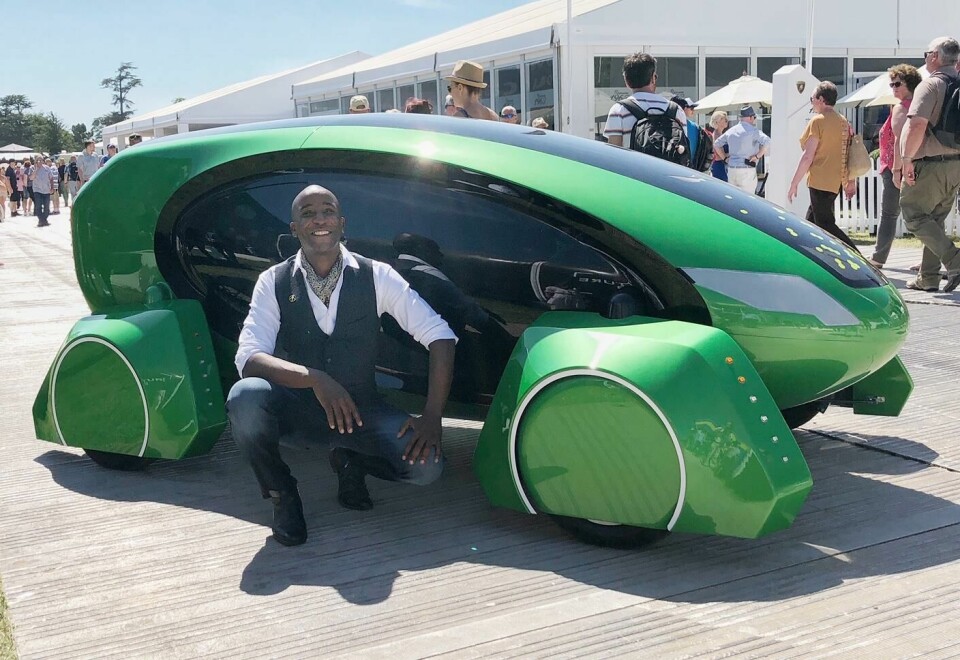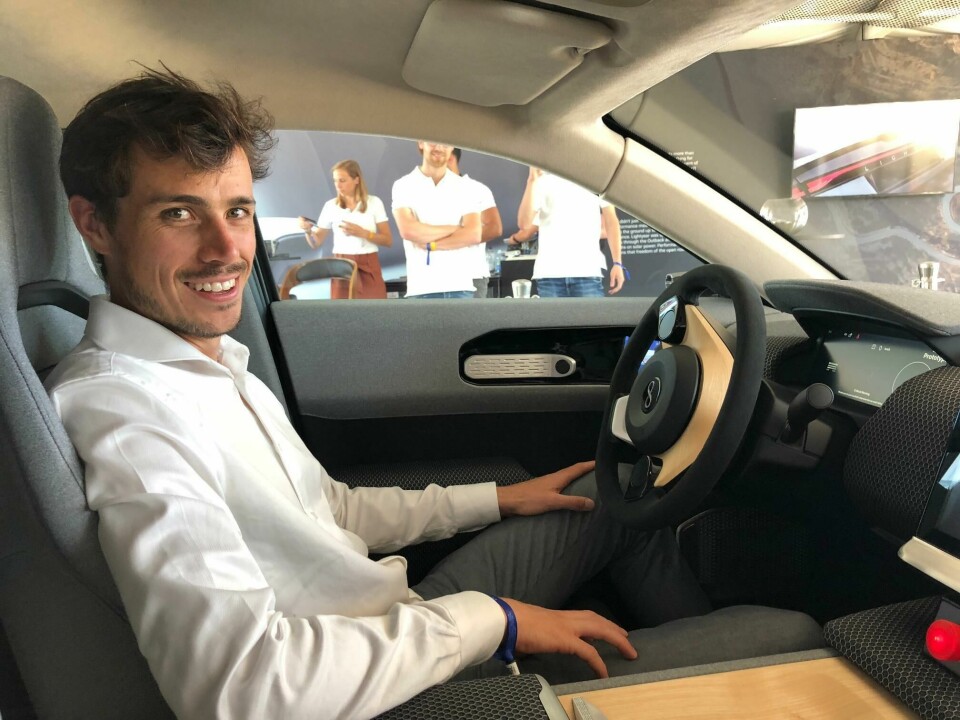
Visions of tomorrow at Goodwood FOS’s Future Lab
Like any good motorshow Goodwood gave us a glimpse into the future of mobility, with a whiff of whimsy too
Endless rows supercars weren’t the only diversions at this year’s Goodwood Festival of Speed. Set among the manufacturer’s sprawling displays was the FOS Future Lab, a showcase of ideas from up-and-coming designers, artists, and engineers. Here are some of the standouts.
Lightyear One
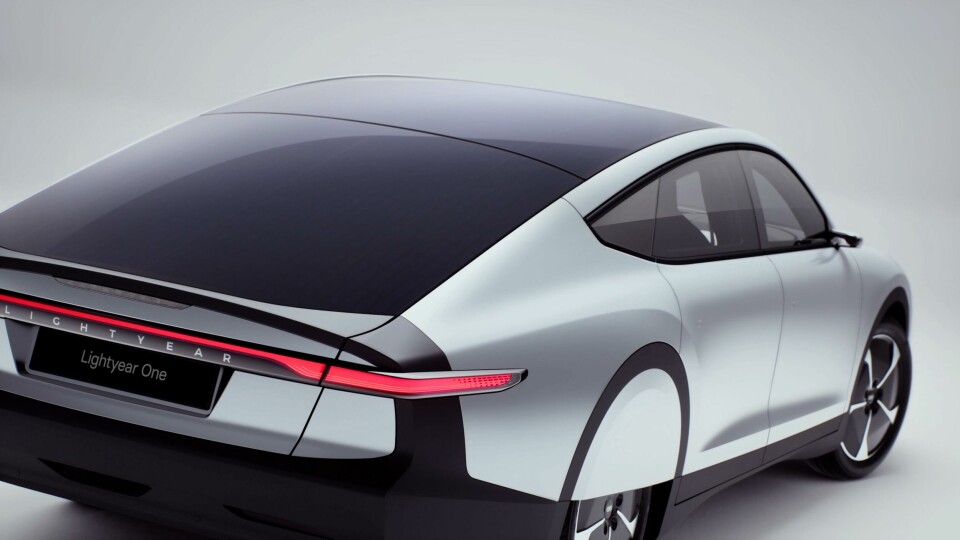
Billed as the first long-range solar powered car, this fully electric vehicle boasts an ultra-aerodynamic design with a drag coefficient that founder and CEO Lex Hoefsloot claims is less than Cd 0.20. Lightyear One was founded in 2016 by Hoefslooot and fellow classmates from Eindhoven University of Technology after developing prototypes for a student project that went on to win the Bridgestone Solar World Challenge. While not powered entirely by the sun, the Lightyear One’s more than 1,000 solar cells can generate up to 45 miles of range on a sunny day, or about 7.5 miles per charging hour. The rest is done by plugging in via level 1 or DC fast charging. The car is powered by four motors, one on each individual wheel, which Hoefsloot says is more efficient than placing them on axles.
The exterior and interior designs were done with the help of former Pininfarina design director Lowie Vermeersch and his firm Granstudio, which created a look that “visually transmits the harmony by which this car can move in nature.” A strong, tapering rear helps with aerodynamics, while “strong graphics assist in balancing proportions and volumes, and convey a feeling of protection to the lower area of the car line.” The interior is simple, with almost no buttons, and vehicle functions are accessed via touch pads on either side of the steering wheel. “The theme of the car is ‘peace of mind,’ Hoefsloot told us during a walkaround. “You shouldn’t have any distractions in the car, just put your phone in and drive away.” He adds that his team’s research showed that many Tesla owners don’t use their vehicle’s “frunks,” so they pushed everything to the front and placed the HVAC system in front of the firewall to create more foot room for front passengers. Many of the interior components come from suppliers, such as the Recaro seats. “A lot of what we do is from scratch, so we want to use as much as possible what is already out there,” Hoefsloot explains. The production version of the Lightyear One will be assembled in the Netherlands, and Hoefsloot anticipates deliveries will begin in 2020.
Case IH Magnum Autonomous Tractor
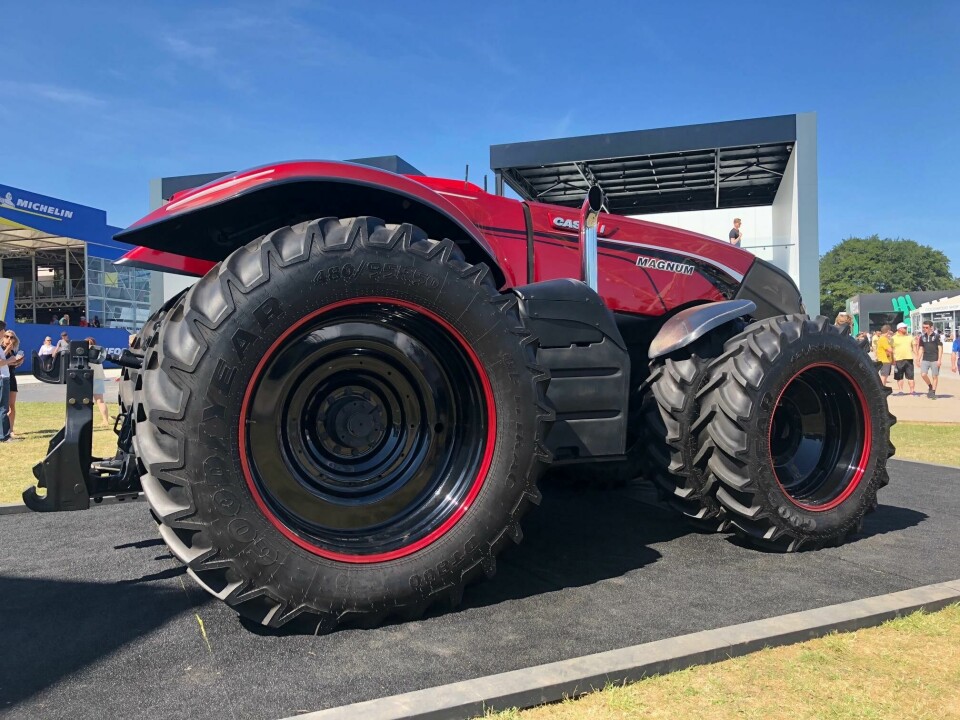
Dwarfing every other vehicle on the Goodwood grounds was a fully autonomous tractor concept sporting dark red paint and massive quadruple Goodyear 480/95R50 rear tyres. Developed by U.S.-based agricultural machinery manufacturer CNH Industrial, the concept’s appearance at Goodwood marks its first showing in the U.K., but it originally debuted in 2016 to elicit feedback from working farmers. A year later, it was named a winner of the Good Design Award, sponsored by the Chicago Anthenaeum Museum of Architecture and Design and Metropolitan Arts Press Ltd.
The behemoth, built from the body of the company’s manually driven Magnum tractor, stands as a symbol of more efficient farming, since it can operate in any time of the day or night with minimal oversight. The concept is fitted with an interactive interface that can plot the most efficient paths through a field. Radar, lidar, and video cameras help the Magnum detect and avoid other machines in the area and adjust for different types of terrain. One remote operator can monitor and override pre-programmed operations from a tablet or desktop computer. Although it’s only a concept, CNH says some of the technology the autonomous Magnum employs is already in use on the company’s current lineup, which can be found on farms all over the world.
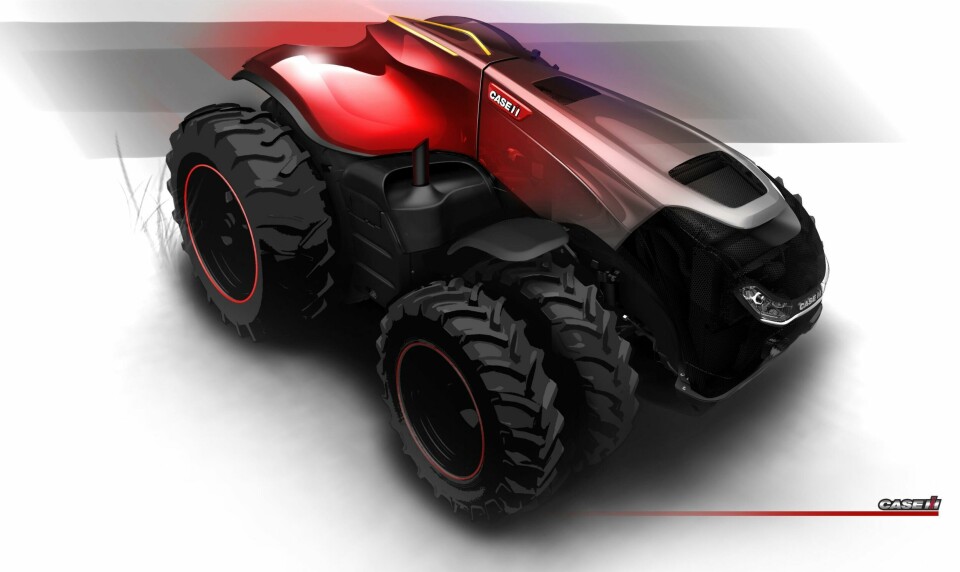
The Emergent City
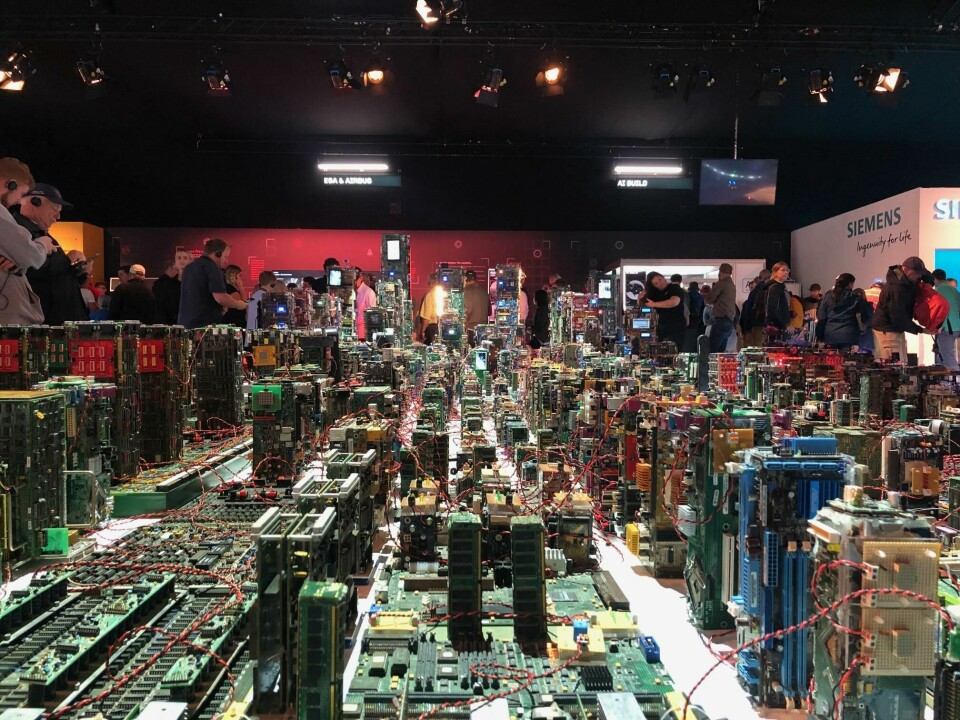
This artistic installation in the middle of the Future Lab not only looks like a vast, miniature city, it is also an interactive, connected network that gathers and displays several kinds of data. Imagined and built by British artist Stanza, the Emergent City is divided into several “districts” integrated within the artwork. The “Authenticity” district consists of two Internet of Things mesh sensor networks – one in London and one at Goodwood, which collect and display light, temperature, and humidity information. The “Electricity” district employs WiFi beacons that scan local network activity in the Future lab, which is visualized by a screen of numbers, representing the complex networks that a city is built on and symbolizing how we are all connected. “Omnicity” streams live traffic camera and vehicle imagery from the London road network, while “Publicity” displays online news and information, reflecting society’s constant exposure to media. Information from hardwired air quality sensors in Goodwood and London measure NO2, CO2, and O2 comprise the “Toxicity” district, showing the vast comparison between the two locales. The Emergent City also buzzes with sound, using the artist’s recordings of the sounds of cities, collected over several years.
Kar-go
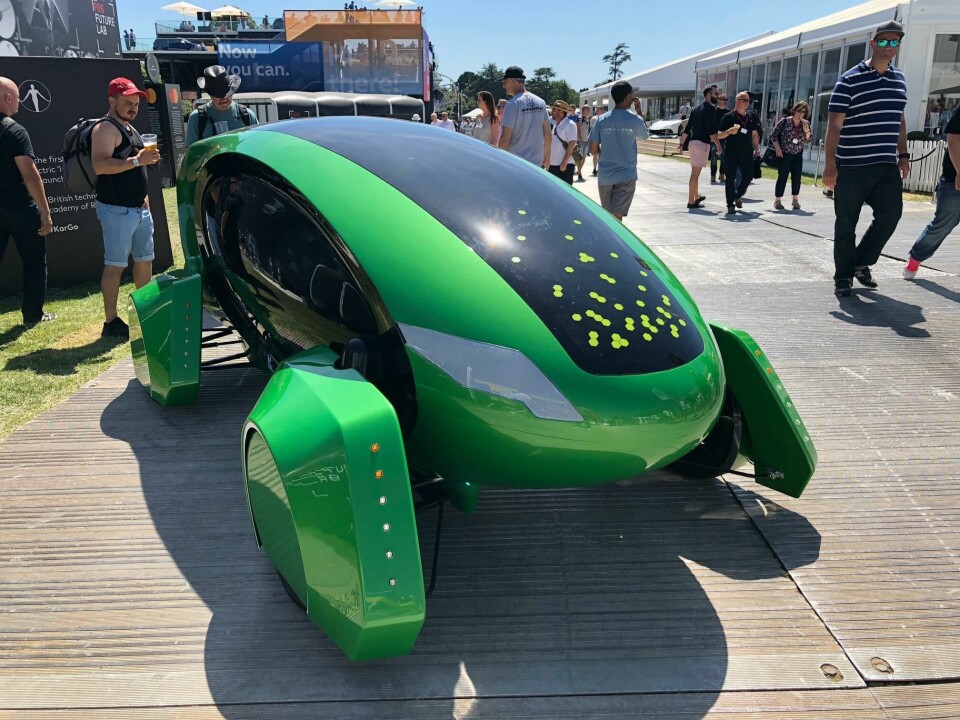
Europe’s first electric driverless vehicle can deliver packages to a recipient anywhere in a broad delivery area, eliminating the need to wait at home or in an office. Built by Welch-based Academy of Robotics, Kar-go chassis are built in the UK and use proprietary software powered by AI chips from NVIDIA and batteries from Tesla. Unlike many current autonomous and semi-autonomous systems that rely on road markings, Kar-go is able to drive on unmarked roads. Company founder William Sachiti sketched the initial design himself, then worked with a freelance industrial designer to refine the project. “It wasn’t about making a car, it was about making the most beautiful robot on the road,” 34-year-old Sachiti tells us. Because the car isn’t carrying humans, Sachiti says there were fewer regulatory restrictions and therefore more design freedom. The organic, almost cartoon-character-like design was deliberately created to look friendly and approachable. “We try to put the user experience before the technology. It’s new tech, people can find these things scary and we want to make it look happy and friendly,” Sachiti explains. “We call it the ice-cream van effect – what would make a bunch of kids run out in the street and scream excitedly that it’s here?” The Academy of Robotics is currently soliciting investors and Sachiti says his company is already in talks with major delivery companies to implement Kar-go on the streets in the UK and beyond.
